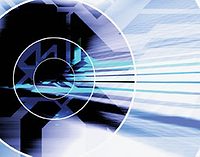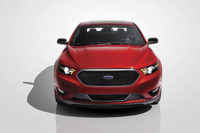
In about 1970 almost all — over 90% — industrial coatings were applied from organic solvents and at low solids. To develop good properties, high-molecular-weight polymers were dissolved in solvents and applied at low solids of about 25% or less. However, at this time, a revolution was taking place in the coatings industry due to ecological and health concerns, and an OPEC-caused energy shortage that had people standing in lines at filling stations to obtain petroleum-based gasoline. Increasing solvent costs were also important economic factors at the time.
To combat these factors, what were then called new technologies were conceived — powder coatings, high-solids coatings, waterborne coatings and radiation-curable coatings. The coating industry didn’t want to change, but change it did. Crosslinking assumed a new importance as a way to develop properties from small bits of polymers known as oligomers. All the new technologies found a place, but with the exception of radiation-cure coatings, most required that a polymer be first made and fabricated to fit the technology and then the cure mechanism applied. Radiation curing used liquid, monomeric materials that were 100% solids in nature and that instantly “dried” to form hard coatings when exposed to radiation from electron beams (EB) or ultraviolet (UV) light. Sales were small, as might be expected, in the early 1970s, but it was a base and through the efforts of many people, radiation-cure technology grew and today it is a sizable business.
By analyzing data from 99 industry members from 65 organizations, Ken Lawson of DSM Desotech reported that the UV/EB market grew just over 10% during 1999. Total sales volume of UV/EB formulations has grown from about 45,000 metric tons (100 million pounds) in 1995 to about 70,000 metric tons (154 million pounds) in 1999. The average market for these products is expected to grow at the high rates of 8–10% in the future with several of Lawson’s respondents expecting growth of 11% to greater than 30% per year.
However, even though this technology is a sizable business today, many feel that it is still in its infancy and just beginning a real growth phase. Its attributes are first being realized by the bulk of the coatings industry. The four-day event saw more than 2,800 people attend the conference. Of these, 1,300 attended the technical and end-user sections. Of course, this meant that a very large number, 1,500, of the people came to tend and to attend the exhibit area. That is a large number of people who were interested mainly in what practical, ready-to-use products and equipment radiation-cure technology had to offer the industry. More than 120 exhibiting companies offered visitors the latest in products and services for the industry.

The keynote speaker for the conference was Edward D. Barrow, Jr., one of America’s leading futurists, who took the audience on a “Journey into the 21st Century.” It was appropriate to have a person “that helps others identify emerging issues and frame the implications of these for themselves and their organizations” — a futurist — begin a conference that deals with a technology in the early stages of the strong growth phase of its existence and that promises great things for the future in the sense of minimizing impact on the ecology, of increasing production while maintaining high quality, and of cost savings for both manufacturer and consumer. Barrow gave a thought-provoking, stimulating speech that impressed the large crowd attending the early morning talk.
It would be impossible to detail this futuristic presentation that dealt with “creating the future” in just a few words. Companies and their management will need to respond to changes in employee attitude as the career-importance-feature pyramid changes. In the past this pyramid was based first on job, then on security, lastly on self-fulfillment. Today it is changing and will be based in the future first on lifestyle, second on career, and lastly on the job (Perhaps this is why many seniors wonder about young peoples’ attitudes, which can be so different from their own?). Good employees don’t leave companies because of low salary and benefits or because they are unhappy with management, as they did in the past. Today over 40% leave because of limited advancement potential, 25% because of the lack of recognition and only 15% because of salary and 10% because of management. The Internet is well known, but e-commerce is only beginning and it promises to advance in the future as companies advertise, sell, and purchase on the Web. Development of purchasing pools involving even large companies is under way — the fact that a few new ones have been inaugurated since the April RadTech 2000 conference is strong evidence of this change. The marked decrease in time from conception to commercial manufacture is also having an impact on business. Anticipatory thinking in business and product development is taking on increasing importance. Although I was impressed with all of the presentations, two items really struck a chord with me. Barrow pointed out that 20% of what we know today will be obsolete in a year, and that 80% of what one needs to know for the future is outside his or her present area of business.

Other demonstrations were carried out in the Fusion UV Systems booth, where the UV curing of fiberglass preforms using CompForm™ technology and UV-cure lamps was done. Nordson Corp. had two live demonstrations of the UV curing of adhesives and coatings. A feature of the Nordson booth was an electrodeless UV lamp system that had a glass reflector with the capability of improved light control and more efficient energy use. This lamp system was used by SUNCOLOR Corp. to demonstrate new UV-light-transmissible materials (UVT™) that enable the cure of pigmented and colored systems through the use of special glass beads. The UVTs allow UV light to penetrate through opaque coatings and effect cure of even thick, pigmented coatings. The beads even improve the cure rate of clear coatings.
Usually EB equipment is thought of as expensive, and it is used for large volume production. However, at the exhibit Advanced Electron Beams demonstrated a small-size, sealed, electron-beam unit, which can be used to cure continuous webs up to 10 inches wide. The cost for the unit was on the order of 10% of that for a full-size commercial unit, which brings EB technology into the realm of use by small shops and for specialty end uses.
Raw material suppliers were present and were dominated by BASF, Sartomer, UCB, Akzo Nobel, and Union Carbide, with many others too numerous to mention here. Sartomer has changed its catalog from hard copy and 31/2-inch diskettes to a website. The rapidly changing product scene in the radiation cure market has prompted them to do this. The site features a formulating area in which one can click-in properties desired in a coating, click again and obtain a suggested formulation. Try www.sartomer.com to view the new catalog. Of course, Sartomer does have hard-copy catalogs available for “non-net” people. BASF introduced its new Laromer® radiation-curable products, some of which are water-based in nature. UCB Chemicals has a line of Uvecoat™ products for the UV-curable powder area, as well a line of free-radical curing materials. Akzo Nobel introduced products that are well known in Europe, but new to North America. Union Carbide featured its Cyracure® cationic epoxide coating materials, though this year others, including Sartomer, have products for this fast-growing area of UV-cure technology. In one of the papers, Stan Jasne of Jordan Technology discussed cationic epoxide coating physical property technology that is being used to make commercial flexible and rigid-flex circuitry, conductive ink, and other products.
End users were at the meeting in droves. This technology is being used today! If one has been attending radiation-cure meetings, they do not need to go back too far in time to remember when raw material suppliers and end users were only talking to each other at such conferences. End users just didn’t give presentations—those who used the technology seemed to guard it very closely and didn’t care to share their success with others. Who could blame them for wanting to keep the golden egg for themselves? I remember in 1985 or 1986 when Alice Pincus felt it was a real accomplishment to get a young fellow to speak extemporaneously about the use of radiation curing in modifying Mark IV conversion vans.
Today it is different. Ultraviolet light and electron beam technology is widely used and probably touches everyone’s life every day in some fashion. Consider that almost every cereal box, every yogurt container and every compact disk is printed with a UV-curable ink/coating. The two halves of DVD-system disks are adhered to each other with a UV-curable adhesive — quite a feat, since the product must be optically clear and uniform when cured and must cause no bending or warping of the composite disk. All cellular phones contain components that have been cured with radiation technology. Other end use areas include wood coatings; optical fiber coatings; printed circuit boards and assemblies as solder masks, conformal coatings, and adhesives; flex circuitry, automobiles, can coatings (for example, the exterior of Coors beverage cans), labels and other packaging materials, and lottery tickets. In the RadTech 2000 exhibit hall, there was an “End-User Product Showcase” that contained well over 100 products that use UV- or EB-cured materials. The centerpiece of the exhibit was an Audi TT with signs that pointed out the numerous items in its construction and finishing that were radiation cured. Paul Elias of Sartomer Co. and current president of RadTech summed up the end-user situation well when he said, “Customers are now asking their suppliers to use our technology, and once an industry player introduces ultraviolet light and/or electron beam technology, it does not take long for others to recognize the advantages in switching.” As said earlier, change is upon the coating, ink, adhesive and sealant industries.
Another reason for switching to UV and/or EB technology was given by The Hartford. I didn’t expect to see an insurance company with a booth at RadTech, but there it was and even offering a chance for a free vacation if you deposited your business card in the fishbowl. The Hartford has joined forces with RadTech to provide end users who use rapidly emerging, safer technologies a way to save on their insurance costs. It is an interesting concept and adds one more item to the list of advantages for radiation curing. Details may be found on Shoneyman@thehartford.com.
At the President’s reception, Richard Stowe of Fusion UV Systems was honored with the Best Equipment Paper Award, and James Crivello of Rensselaer Polytechnic Institute was honored with the Overall Best Paper Award.
Anne Goyer and Gary Cohen are to be complimented for putting on a well-organized, efficient, and excellent conference and exhibit. It was fun to attend, breakfast and lunch certainly were more than acceptable, and the knowledge gained is immeasurable. The next RadTech meeting will be RadTech Asia 2001 and will be hosted by RadTech China and held in Kunming, China. Details can be obtained through radtechcn@263.net. The next national RadTech meeting will be RadTech 2002, and held on April 28–May 1, 2002 in Indianapolis. Details can be found at www.radtech.org or by calling Goyer Management at 513/624.9988.



Report Abusive Comment